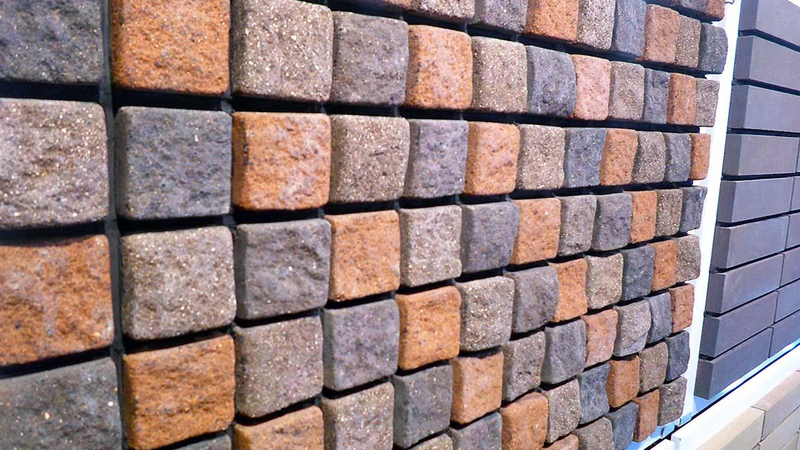
Diverse brick types including clay and concrete options.
Clay bricks are the most widely used type of bricks. They are made from clay that is molded and fired in a kiln. Clay bricks can be further classified based on their manufacturing process and properties. Dry-Pressed Bricks are made by pressing clay into molds under high pressure. They have a smooth and uniform texture. Extruded bricks are formed by forcing clay through a die to create a continuous column, which is then cut into individual brick units. They often have holes or indentations, which can reduce weight and improve insulation. Wire-cut bricks are produced by cutting bricks from the extruded clay column using wires. They have textured surfaces and are commonly used for facing or decorative purposes.
Concrete bricks are made from a mixture of cement, sand, aggregate, and water. They are cast in molds and cured to harden. Concrete bricks offer higher strength and durability compared to clay bricks. They are often used in load-bearing walls and structural applications. Sand-lime bricks are made by mixing sand, lime, and water. The mixture is then compacted and cured in an autoclave or steam chamber. These bricks have a smooth texture, excellent compressive strength, and good resistance to moisture. They are commonly used in areas with high moisture or chemical exposure.
Perforated bricks have uniformly spaced holes or perforations throughout their structure. These holes enhance ventilation and reduce the overall weight of the brick. Perforated bricks are often used in areas where moisture control and airflow are essential, like in cavity walls or areas prone to dampness. Special shaped bricks are customized bricks made to fit specific architectural requirements. They can be manufactured in various shapes, such as angles, curves, or arches, to accommodate unique design elements in buildings. One of the main reasons that have attracted so much attention to brick is its unique variety in design, color, dimensions and application. The different types of bricks are so diverse that we will limit ourselves to examining only some of them here. Join us to travel to the wide world of this special material.
- Glazed brick
- Brick machine
- Sand-lime bricks
- Clay or Ital brick
- Fireproof brick
Based on quality, bricks are divided into three types: first, second and third grade.
Based on the production method, bricks are divided into three types: extruded bricks, pressed bricks, and handmade bricks.
Based on the materials used in the construction process, bricks are divided into clay bricks, shale bricks, concrete bricks and refractory bricks.
Bricks are divided into two types, built-in bricks and exposed bricks, based on the place of use.
According to the application, bricks are divided into two types, ordinary bricks and engineering bricks.
According to the appearance, the brick is divided into three types: hollow brick, hollow brick, and beveled brick.
Engineering bricks are a dense and strong type of brick used in demanding applications. They have high compressive strength and low water absorption. Engineering bricks are often used in areas requiring resistance to frost, abrasion, and chemicals, such as in basements, manholes, and civil engineering projects. Fire bricks, also known as refractory bricks, are designed to withstand high temperatures without degrading. They are made from refractory clay or materials like alumina, silica, and fire clay. Fire bricks are used in applications such as fireplaces, furnaces, kilns, and chimneys. Hollow bricks have cavities or holes that reduce their weight and improve insulation properties. They can be made of clay or concrete and are commonly used in non-load-bearing walls or partitions.
-

Bricks are rectangular blocks used in construction, made primarily from clay or shale. They are known for their durability, thermal insulation, and fire resistance. Various types of bricks exist, including clay, concrete, and fire bricks, each suited for different applications. The brick production process involves mining raw materials, molding them into shape, drying, and firing in kilns to achieve hardness. Despite the rise of alternative materials like concrete blocks and steel frames, bricks remain popular due to their cost-effectiveness and aesthetic appeal. They are widely used in residential and commercial construction for walls, pavements, and decorative elements. Bricks offer advantages such as long lifespan and minimal maintenance but can be heavy and labor-intensive to install. Their versatility allows for various architectural styles while providing good acoustic insulation.
The standard size of a brick varies globally but typically measures around 9 inches long by 4. 5 inches wide by 3 inches thick. Overall, bricks continue to be a fundamental building material with a rich history in construction.
-

Clay bricks dominate the market due to their versatility and various manufacturing processes. They can be categorized into several types, including dry-pressed, extruded, wire-cut, concrete, sand-lime, perforated, and special-shaped bricks. Each type has unique properties suited for different applications. For instance, dry-pressed bricks offer a smooth texture while extruded bricks are lightweight with improved insulation. Concrete bricks provide higher strength for structural uses, whereas sand-lime bricks excel in moisture resistance. Perforated bricks enhance ventilation and are ideal for damp areas. Special-shaped bricks cater to specific architectural needs. Additionally, bricks can be classified based on quality (first, second, third grade), production methods (extruded, pressed, handmade), materials (clay, shale, concrete), usage (built-in or exposed), application (ordinary or engineering), and appearance (hollow or beveled).
Engineering bricks are particularly strong and suitable for demanding environments like basements and manholes. Fireproof or refractory bricks withstand high temperatures and are essential in fireplaces and kilns. The diversity in brick types allows for a wide range of design possibilities in construction.
-
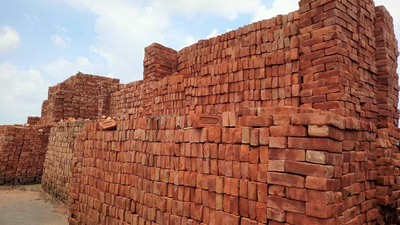
The production of bricks involves several critical steps that influence their quality and price. The process begins with the extraction of raw materials, primarily clay, which is then prepared by removing impurities and adding iron oxide for color. The clay is mixed with water to create a moldable consistency before being shaped through traditional or machine methods. Drying follows, where moisture is gradually removed to prevent cracking. Finally, the bricks are baked in kilns at high temperatures, allowing for crystallization and hardening. Variations in the process can lead to different types of bricks, including glazed options that require an additional surface treatment. Each stage of brick production is essential for ensuring durability and aesthetic appeal, making it crucial for manufacturers to adhere to best practices.
-
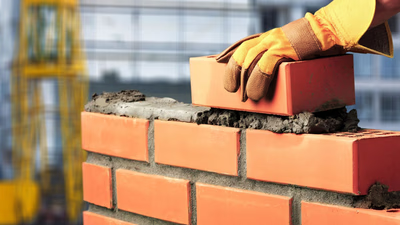
Bricks are a fundamental building material used in various construction applications, including residential and commercial structures. They provide essential structural strength, stability, and durability for load-bearing and non-load-bearing walls, pavements, and retaining walls. Their versatility allows for the creation of architectural features like arches and decorative elements, enhancing the aesthetic appeal of buildings. Bricks are also crucial in the restoration of historic structures, ensuring that renovations maintain original character. In landscaping, bricks define spaces through raised beds and garden walls while adding elegance to outdoor areas. Additionally, bricks serve as a medium for artistic expression in installations and sculptures. Despite a shift towards metal or concrete skeletons in modern multi-story buildings, bricks remain popular for facades and other applications due to their durability and thermal properties. They are particularly valued in constructing fireplaces, chimneys, industrial structures, boundary walls, and fences due to their fire resistance and insulation capabilities. The ongoing interest in brick usage reflects its importance within the construction industry.
-
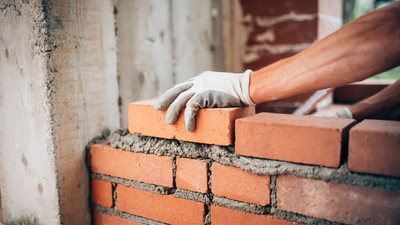
Bricks have a rich history dating back to around 7000 BC in modern-day Turkey and the Middle East. Initially made from sun-dried mud or clay, these early bricks were essential for constructing simple structures. The Mesopotamians advanced brick manufacturing techniques, introducing kiln firing to create stronger bricks, exemplified by the iconic Ishtar Gate in Babylon. Although brick usage declined during the Middle Ages, it saw a revival during the Renaissance, particularly in the Netherlands. The Industrial Revolution further transformed brick production with steam-powered machines and mechanized kilns, leading to standardized sizes and increased output. In Iran, archaeological evidence shows brick kilns dating back over 6000 years. Ancient Egyptians also utilized mud bricks extensively for their monumental constructions, including pyramids. The Romans innovated by using mortar as a bonding agent, enhancing structural stability and leading to widespread use across their empire. Today, while modern materials like concrete and steel have emerged, bricks remain popular due to their durability and aesthetic qualities.
-
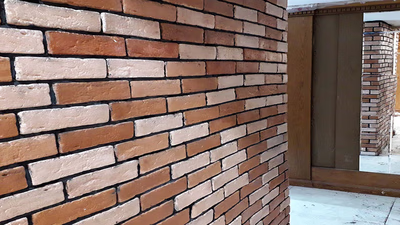
Brick is an environmentally friendly, inorganic material that excels in construction due to its moisture absorption and noise insulation properties. Its energy efficiency is notable, as refractory bricks help maintain indoor temperatures, reducing energy waste. The durability of brick ensures minimal maintenance, as it retains its aesthetic appeal over time without special care. Resistant to deformation from temperature changes and pressure, bricks are suitable for various architectural designs and can support buildings over eight stories. Their fire-resistant nature enhances safety by preventing the spread of flames and toxic gases. Additionally, bricks are versatile in design, available in various colors and styles that cater to different tastes. They can be easily recycled and reused, contributing to sustainability in construction. Overall, the combination of beauty, functionality, and longevity makes brick a preferred choice for modern building facades.






